HIGHLIGHTS
PROGRAM UPDATES
Timber-Strong Design Build Competition Expands Reach The AWC Extends Construction Fire Safety Education to Graduate-Level Students WoodWorks Undertakes WBLCA Tool AnalysisINDUSTRY NEWS
The Controversial Role of Large Trees in Creating a Sustainable, Renewable Resource Economy Rising Home Prices Prompt Some Buyers to Abandon Search Race to the Top: New Timber Skyscrapers Under Development Around the Globe Mass Timber’s Role in Attracting ESG-Focused Building Tenants A Case for Reclaimed WoodINSIGHTS ON THE COMPETITION
Concrete Institute Launches New Effort to Accelerate Carbon-Neutral ConcreteProgram Updates
Timber-Strong Design Build Competition Expands Reach
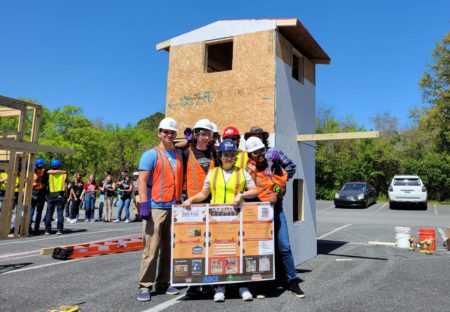
Now in its fifth year, the Timber-Strong Design Build (TSDB) competition—often a university student’s first experience designing and building with wood—expanded this year to reach more than 125 students from over 20 universities across five regions.
The competition, which since 2018 has been hosted annually by the American Society of Engineers (ASCE) in partnership with the AWC, APA – The Engineered Wood Association, and Simpson Strong-Tie, challenges student teams to design and build sustainable, two-story wood light-framed buildings. The Timber-Strong competition emphasizes building with wood as a completely renewable, carbon-friendly material and is one of several unique design and building challenges ASCE hosts as part of its annual multiday Student Symposia.
For this year’s Timber-Strong competition, participating teams created a building design and accompanying computer model in advance, then built their structures during the symposia. Entrants were judged on a host of design and construction criteria, including the structure’s estimated carbon benefit, which was calculated using WoodWorks’ Carbon Calculator tool.
Timber-Strong was developed in part as a counter program to the Concrete Canoe Competition, which is also hosted by ASCE as part of the Study Symposia. In this competition, student teams build and race canoes built with concrete. In recent years, the competition was sponsored in part by the National Precast Concrete Association (NPCA).
AWC Advances Opportunities for Wood During ICC Group B Hearings
The International Code Council (ICC) recently held its Group B Code Development Hearings in Rochester, New York, during which committees considered proposals affecting the International Residential Code, International Existing Building Code, ICC Performance Code, and the structural provisions of the International Building Code. AWC staff held several influential committee positions at the hearings, including two chairships, and were active across committees in creating and protecting opportunities for wood.
The AWC successfully testified against changes before the Administrative Code Development Committee that would have added criteria for how manufacturers should label products to conform with standards. The proposed language—which was disapproved—was not compatible with the quality assurance process currently used by the wood products industry. The Administrative Code Committee also considered updates to the AWC reference standards, including the National Design Specification® for Wood Construction and the Wood Frame Construction Manual, both of which were recommended for approval.
Under the Residential Building Code Development Committee, which was chaired by an AWC staff member, an AWC-proposed change to add ASTM D8391 for determining the equivalency of wood-based floor assembly fire protection was recommended for approval with a floor modification. The new standard will provide a valuable point of reference for code officials when evaluating alternative products for use on I-joists and trusses. Several changes related to snow- and wind-load maps were also recommended for approval, which will affect the development of future AWC design aids, including the Wood Frame Construction Manual.
The AWC opposition contributed to the nixing of a proposed change that would have required homes being rebuilt outside of wildland-urban interface (WUI) zones, which were destroyed in a WUI event, to be constructed to meet WUI requirements. Local jurisdictions have the authority to designate WUI zones, and thus this change was beyond the building code’s scope.
The ICC will hold additional public hearings on recommended changes in September, followed by final online voting.
The AWC Extends Construction Fire Safety Education to Graduate-Level Students
The AWC’s Fire Service Relations Manager, Ray O’Brocki, recently provided construction fire safety education to 25 students in the Fire Engineering program at Eastern Kentucky University as part of their capstone requirement to graduate. This was the AWC’s first—of hopefully many—foray into graduate-level education and represents another important step in helping to ensure that fire safe practices are well known and followed at all levels of the building industry, from designers to fire officials.
Higher-education students entering design and construction disciplines have been identified by the SLB as an area deserving greater effort. The SLB has previously reported on engagements with architecture and engineering students through Think Wood and WoodWorks. Taking advantage of this opportunity was a way for the AWC to be a compelling influencer of emerging design and construction professionals.
Think Wood Editorial Covers ‘Making Zero-Carbon Homes a Reality'
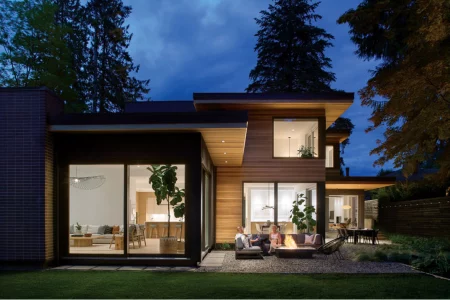
Although commercial and multifamily buildings have focused on reduced carbon footprints in recent years, the concept is relatively new for homebuilders—especially measuring embodied carbon. Still, low carbon construction ranked at the top in Think Wood’s 2022 Timber Trends survey of more than 500 architecture, engineering, and construction professionals, some of whom design and build single-family homes.
Most homebuilders are familiar with operational carbon, which refers to greenhouse gasses emitted from a home’s energy use after it is built. However, fewer are versed in embodied carbon, which is all the energy that went into manufacturing and transporting a home’s building materials as well as emissions associated with physical construction. Right now, a home’s embodied carbon is likely higher than most green-focused homebuilders realize.
The average U.S. home produces 45 kg of CO2 per square meter annually from an operational perspective, according to a 2020 University of Michigan study. But a recent Canadian report found embodied carbon accounted for 250 kg of CO2 per square meter in residential buildings, or more than five times as much. This means that even the most energy-efficient new homes built today have already contributed five years’ worth of greenhouse gas emissions to the environment before their first owner moves in.
The good news is that framing homes with wood—which, fortunately, is the dominant method of framing today—offers a lower carbon footprint than other structural materials. Of the three primary structural materials used in construction, manufacturing lumber is the least energy intensive, accounting for comparatively low embodied carbon.
To better understand how residential builders are approaching carbon reductions, Think Wood interviewed Aaron Smith, CEO of Energy & Environmental Building Alliance (EEBA) and GreenSmith Builders; Bill Rectanus, COO of Thrive Home Builders; and Corey Donahue, Co-Founder of Bettr Homes. Read what they had to say about this emerging trend: https://www.thinkwood.com/blog/making-zero-carbon-homes-a-reality.
WoodWorks Undertakes WBLCA Tool Analysis
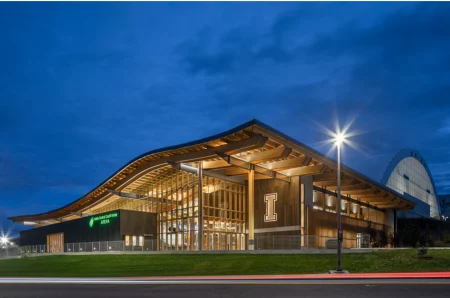
In 2021, WoodWorks undertook a project to better understand how Whole Building Life Cycle Assessments (WBLCAs) are being used by design and construction professionals to make sustainable design decisions and to survey the tools. In Phase 1, they learned that the most significant elements of WBLCA tools driving favorable or unfavorable results for wood are biogenic carbon accounting approaches and end-of-life scenarios and assumptions. Most users do not have the information or knowledge to make educated decisions related to these topics, which can result in sub-optimal results for wood. Some firms are also creating their own internal databases of WBLCA results to establish benchmarks. Without consistent, accurate data going into these analyses, firms may not realize the superior environmental benefits of wood.
There is clearly confusion in this space, and WoodWorks is working collaboratively with other SLB-funded groups to support developers and building designers with relevant and transparent information. With input from Think Wood and AWC, WoodWorks recently published the first two in a series of Expert Tips on this topic—Introduction to Whole Building Life Cycle Assessment (WBLCA) and When to Include Biogenic Carbon in an LCA—and several others will be released this quarter.
Industry News
The Controversial Role of Large Trees in Creating a Sustainable, Renewable Resource Economy

In a recent blog post, SLB collaborator Edie Sonne Hall of Three Trees Consulting considered how Washington state might best meet the IPCC’s call for net-zero greenhouse gas emissions by 2025 by leveraging its existing large evergreens as part of working forests. Sonne Hall argues that the best way to meet carbon-reduction goals and the needs of a growing population is to adopt a renewable resource economy, which means increasing production of forest products and increasing carbon stocks by growing more trees.
Based on biological rotations of tree species and the financial costs associated with harvesting rotations to optimize reduced emissions, Sonne Hall believes that Washington is well positioned to leverage its existing forests and argues that, as part of its strategy, it should look to harvest older, larger trees to support the wood fiber supply while other tree stands grow. Sonne Hall notes that state inventory analysis shows that there are 500,000 more acres of 80- to 100-year-old trees now than in 2006; while some of these forests will continue to grow, others are overstocked and face elevated risk from fire and disease.
Sonne Hall’s views on harvesting older, larger trees to support a renewable resources–enabled economy are not unanimously held. For example, the Climate Forests Campaign, a coalition of 90 local and national environmental groups including NRDC and the Sierra Club, contends that conserving the United States’ remaining older forests and trees, which store carbon for decades if not centuries, is one of the country’s “most straightforward, impactful, and cost-effective climate solutions.”
Read more from Sonne Hall here.
Rising Home Prices Prompt Some Buyers to Abandon Search
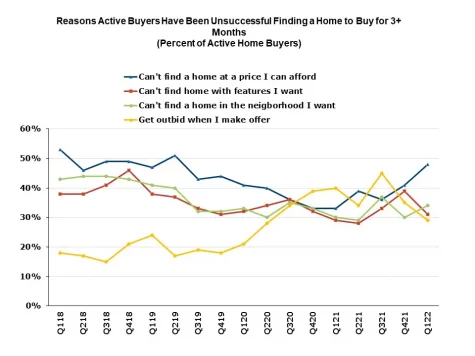
According to NAHB’s Eye On Housing, new single-family home sales dropped in the first quarter of 2022, driven in part by higher mortgage interest rates, higher construction costs, and low inventory that is driving up price. In March alone, federal government data estimated sales of newly built single-family homes at 763,000, which was 8.6% lower than February’s estimate of 835,000 and 12.6% below the March 2021 estimate of 873,000.
Meanwhile, NAHB reports that the median sales price in March 2022 was $436,700, up 3.6% from February 2022 and an incredible 21.4% increase from March 2021.
Separately, NAHB reports that high home prices are prompting a growing number of buyers to abandon their home search altogether. Approximately two-thirds of buyers engaged in finding a home in the first quarter of 2022 had already spent three months or more searching for a home without success. The inability to find an affordable home was the most common reason cited by prospective buyers as to why they had not purchased to date.
While some prospective buyers expect to persist in their search, including by either settling for a smaller home or stretching to buy a more expensive one, one in four of these buyers plan to give up their home search for the time being, up from one in five in mid-2021.
Race to the Top: New Timber Skyscrapers Under Development Around the Globe
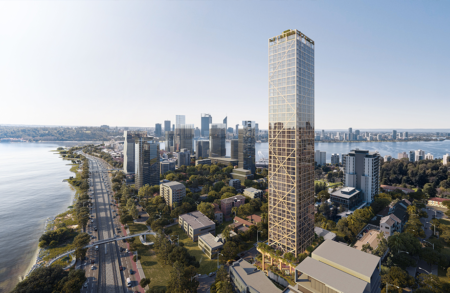
Since mass timber’s introduction in the 1990s, designers worldwide have steadily pushed to build bigger and better with wood, including as an effective means to reduce the built environment’s high carbon footprint. The title of “world’s tallest wood building” has quickly shifted hands as taller projects come online, transferring from the nine-story Stadthaus in London (c. 2009) to the 10-story Forté in Melbourne (c. 2012) to the 18-story Mjøstårnet in Norway (c. 2019) and soon to the 25-story Ascent building in Milwaukee in just over a decade.
According to recent reporting from around the globe, Ascent will soon find itself with company in the 20-plus-story range from the following projects, now under development:
- The more-than-30 story Rocket&Tigerli residential building in Switzerland, is scheduled for completion in 2026. Designed by Danish studio Schmidt Hammer Lassen. Rocket&Tigerli will feature a mass timber structural core and load-bearing system and will edge out Mjøstårnet as the world’s tallest load-bearing timber building by 14.6 meters.
- A 40-story, 180-meter timber tower in Sydney, Australia, is being developed by tech giant Atlassian and designed by New York–based architects SHoP. The tower, which has already secured government approval, will feature a timber core and, once complete, will be the tallest commercial hybrid timber building in the world.
- The 50-story hybrid residential tower, C6, in Perth, Australia, is being developed by Melbourne-based Grange Development and designed by Elenberg Fraser. Grange recently submitted plans; if successful, the CLT and glulam tower will out top Atlassian’s skyscraper in Sydney by three meters.
James Dibble, a member of C6’s development team, cites climate change and the need to reduce emissions as a key driver for prioritizing mass timber, a commonly held view across these and many other tall mass timber projects. According to Dibble, “Timber as a building material has been around for centuries, but only recently has mass timber construction and fabrication methods made it a viable option en masse. . . . [C6] represents the future of what is possible, except we will deliver it now.”
Mass Timber’s Role in Attracting ESG-Focused Building Tenants
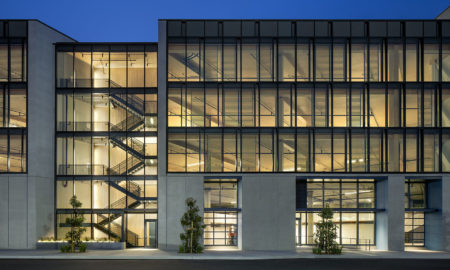
Discussion turned to mass timber’s important role in helping building developers and operators attract tenants that are oriented to environmental, social, and governance (ESG) commitments during the ULI Spring Meeting, held in April in San Diego. The discussion was part of a larger session on mitigating the growing and multifaceted threat of wildfires.
In the session, Paul Hessburg, Research Landscape Ecologist, U.S. Forest Service, summarized the science behind increasingly catastrophic wildfires and discussed how building designers can help reduce fuels in the United States’ often overly dense forests, including by increasing demand for sustainably produced wood products. Hessburg was joined by Paul Stein, Managing Partner, SKS Partners, the developer behind the 1 De Haro project, California’s first multistory CLT building. Stein shared for the first time the WoodWorks-produced mass timber business case study on 1 De Haro and discussed the building’s unique appeal to ESG-driven tenants in the Bay Area.
Both Hessburg and Stein stressed the role that mass timber and other wood products play in contributing to forest health, sustainability, climate change mitigation, and positive financial outcomes for the design and building communities.
Read more about the session here (users must register on the host site to access content).
A Case for Reclaimed Wood
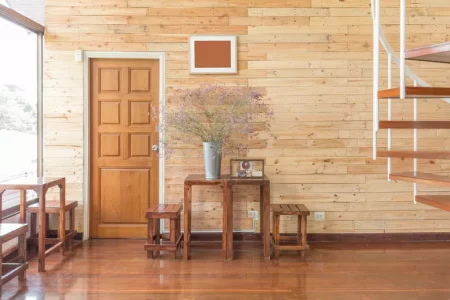
Writing in Treehugger, author David Kuchta recently explored the sustainability of reclaimed wood, asserting that “reclaimed wood can be a more sustainable alternative to new wood and other building materials.”
Kuchta cites the problem of illegal and unsustainable harvesting of new wood in less regulated countries and the loss of stored carbon caused by harvesting—be it legal or illegal—as key points in favor of reclaimed wood. Although Kuchta acknowledges that the use of new wood in building construction has a lower carbon footprint than concrete or steel, he cites the emissions associated with wood disposal as a climate risk, as opposed to the ongoing carbon-storage capabilities offered by reclaimed wood.
The SLB is already on record as a proponent of reuse. The AWC and the Canadian Wood Council (CWC) have partnered with the Building Materials Reuse Association (BMRA) to develop an online North American directory outlining reuse and recycling options for wood and wood products.
Read more from Kuchta here, and find out how you can encourage increased wood reuse by visiting ReuseWood.org.
Insights on the Competition
Concrete Institute Launches New Effort to Accelerate Carbon-Neutral Concrete

The American Concrete institute has launched NEU: An ACI Center of Excellence for Carbon Neutral Concrete, which intends to unify and catalyze the concrete industry around research, education, awareness, and adoption of carbon-neutral concrete materials in the built environment.
Based at ACI’s headquarters in Michigan, NEU will focus on supporting the deployment of existing and the development of new technologies to reduce the concrete industry’s carbon footprint. The ACI board has provided initial funding for staff and projects, and Baker Concrete, the largest concrete contractor in the United States, has signed on as the center’s initial member.
According to NEU’s Executive Director, Andrea Schokker, “NEU envisions a concrete industry where all stakeholders have access to technologies and the knowledge needed to effectively and safely produce and place carbon-neutral concrete and concrete products. Concrete plays a major role in a sustainable future and collaboration with members worldwide is critical to developing a comprehensive plan to help make the concrete industry carbon neutral by 2050.”
Read more about NEU here.
Industry Resources
FEA’s Housing Dashboard
This housing dashboard is provided compliments of Forest Economic Advisors (FEA)
Virginia Tech’s Monthly Housing Report
This monthly housing commentary report is a free service of Virginia Tech and is intended to help one gauge future business activity in the U.S. housing market.
March 2022 Reports (released in May 2022)
Part A: March Housing Commentary
Part B: March Economic Conditions



